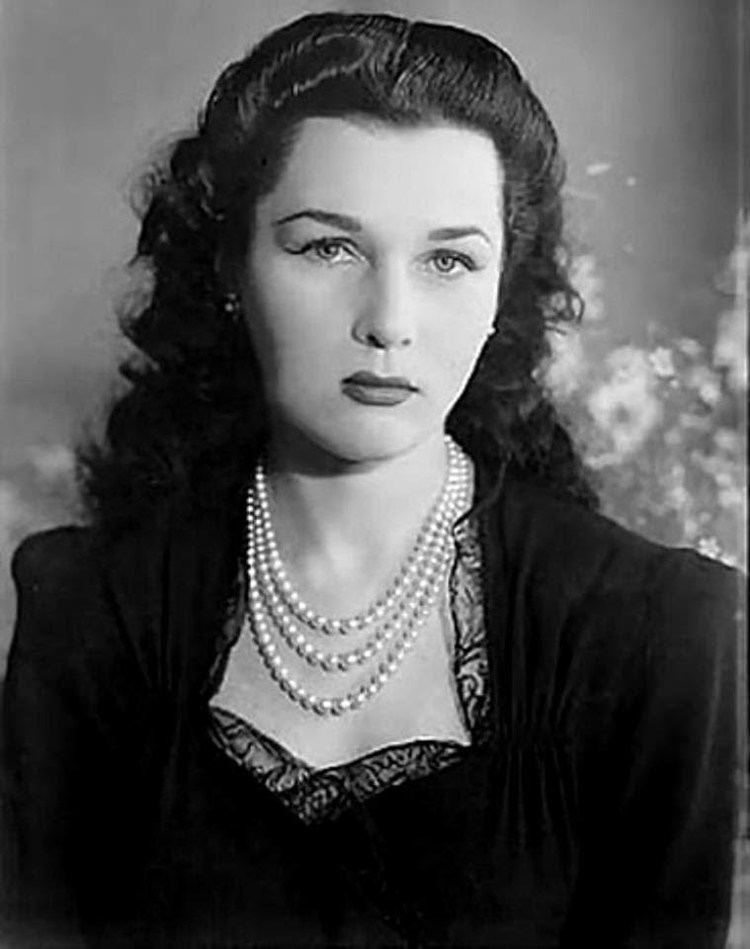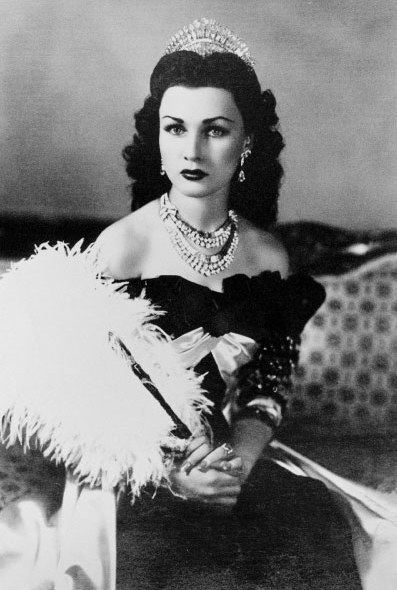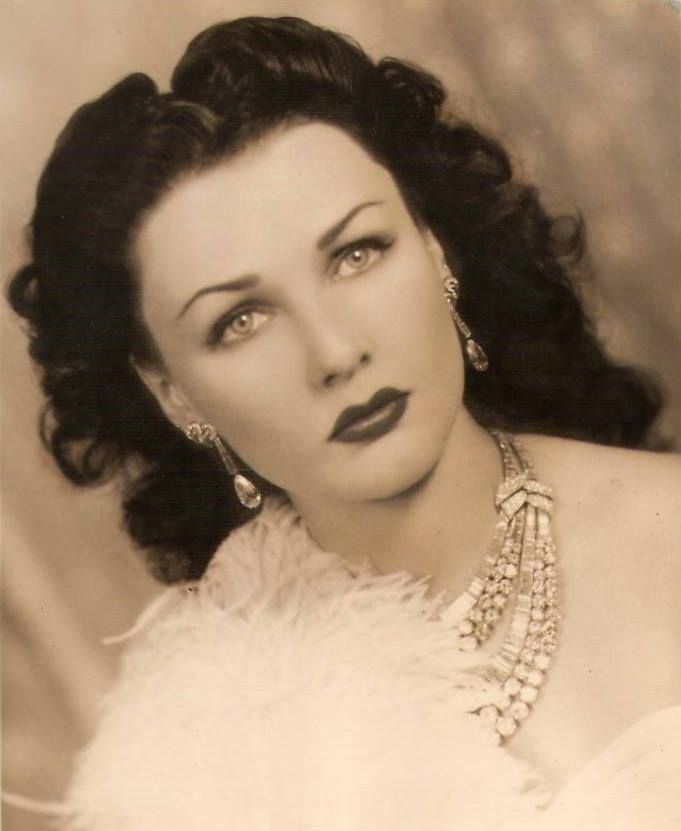Name Fawzia of | ||
 | ||
Tenure 16 September 1941 – 17 November 1948 Burial 3 July 2013Cairo, Egypt Issue Shahnaz PahlaviNadia ChirineHussein Chirine Died July 2, 2013, Alexandria, Egypt Similar People Shahnaz Pahlavi, Mohammad Reza Pahlavi, Soraya Esfandiary‑Bakhtiari, Farah Diba, Farouk of Egypt | ||
Fawzia fuad of egypt
Fawzia Fuad of Egypt (Arabic: الأميرة فوزية فؤاد; Persian: شاهدخت فوزیه فؤاد; 5 November 1921 – 2 July 2013), also known as Muluk Fawzia of Iran, was an Egyptian princess who became Queen of Iran as the first wife of Mohammad Reza Pahlavi.
Contents
- Fawzia fuad of egypt
- Early life and education
- First marriage
- Second marriage
- Later life and death
- Legacy
- Honours
- References

Princess Fawzia was the daughter of Fuad I, the seventh son of Ismail the Magnificent. She descended from the Muhammad Ali Dynasty. She was also known as Fawzia Chirine (or Shirin), having married to Colonel Ismail Chirine, Egyptian diplomat of Circassian origin, in 1949. After the Egyptian Revolution of 1952, her royal titles were no longer recognized by the Egyptian government. Until her death in 2013, she was the oldest member of the deposed Muhammad Ali Dynasty residing in Egypt. Her nephew, Fuad, who was proclaimed King Fuad II of Egypt and Sudan after the Revolution, resides in Switzerland.

Early life and education

Princess Fawzia was born Her Sultanic Highness Princess Fawzia bint Fuad at Ras el-Tin Palace, Alexandria, the eldest daughter of Sultan Fuad I of Egypt and Sudan (later King Fuad I), and his second wife, Nazli Sabri on 5 November 1921. Princess Fawzia Fuad was of Albanian, Turkish, French and Circassian descent. Princess Fawzia's maternal great-grandfather was Major-General Muhammad Sharif Pasha who is of Turkish origin is Prime Minister and Minister for Foreign Affairs. One of her great-great-grandfathers was Suleiman Pasha, a French army officer who served under Napoléon, converted to Islam, and oversaw an overhaul of the Egyptian army.

In addition to her sisters, Faiza, Faika and Fathia, and her brother, Farouk, she had two half-siblings from her father's previous marriage to Princess Shwikar Khanum Effendi. Princess Fawzia was educated in Switzerland and was fluent in English and French in addition to her native Arabic.
Her beauty was often compared to that of film stars Hedy Lamarr and Vivien Leigh.
First marriage
The marriage of Princess Fawzia to Iran's Crown Prince Mohammad Reza Pahlavi was planned by the latter's father, Rezā Shāh. A declassified CIA report in May 1972 described the union as a political move. The marriage was also significant in that it united a Sunni royal, the Princess, and a Shia royal, the Crown Prince.
Princess Fawzia of Egypt and Mohammad Reza Pahlavi were engaged in May 1938. However, they saw each other only once before their wedding. They married at the Abdeen Palace in Cairo on 15 March 1939. When they returned to Iran the wedding ceremony was repeated at Marble Palace, Tehran, which was also their future residence.
Following the marriage, the Princess was granted Iranian nationality. Two years later the crown prince succeeded his exiled father and was to become the Shah of Iran. Soon after her husband’s ascent to the throne, Queen Fawzia appeared on the cover of the 21 September 1942, issue of Life magazine, photographed by Cecil Beaton, who described her as an "Asian Venus" with "a perfect heart-shaped face and strangely pale but piercing blue eyes." She led the newly founded Association for the Protection of Pregnant Women and Children (APPWC) in Iran.
With Mohammad Reza Shah Pahlavi she had one child, a daughter:
The marriage was not a success. Queen Fawzia (the title of empress was not yet used in Iran at that time) moved to Cairo in May 1945 and obtained an Egyptian divorce. The reason for her return was that she viewed Tehran as underdeveloped in contrast to modern, cosmopolitan Cairo. She consulted an American psychiatrist in Baghdad for her troubles shortly before she left Tehran. On the other hand, CIA reports claim that Princess Fawzia ridiculed and humiliated the Shah due to his impotence, leading to their separation. In her book Ashraf Pahlavi, twin sister of the Shah, argues that it was the Princess not the Shah who asked for divorce.
This divorce was first not recognized for several years by Iran, but eventually an official divorce was obtained in Iran, on 17 November 1948, with Queen Fawzia successfully reclaiming her previous distinction of Princess of Egypt as well. A major condition of the divorce was that her daughter be left behind to be raised in Iran. Incidentally, Queen Fawzia’s brother, King Farouk, also divorced his first wife, Queen Farida, in November 1948.
In the official announcement of the divorce, it was stated that "the Persian climate had endangered the health of Empress Fawzia, and that thus it was agreed that the Egyptian King’s sister be divorced." In another official statement, the Shah said that the dissolution of the marriage "cannot affect by any means the existing friendly relations between Egypt and Iran." After her divorce Princess Fawzia headed the Egyptian court.
Second marriage
On 28 March 1949, at the Koubba Palace in Cairo, Princess Fawzia married Colonel Ismail Chirine (or Shirin) (1919–1994), who was the eldest son of Hussein Chirine Bey and his wife, HH Princess Amina Bihruz Khanum Effendi. He was a graduate of Trinity College, Cambridge and a one-time Egyptian minister of war and the navy. Following the wedding they lived in an estate owned by the Princess in Maadi, Cairo. They also resided in a villa in Smouha, Alexandria.
They had two children, one daughter and one son:
Later life and death
Fawzia lived in Egypt after the 1952 revolution that toppled King Farouk. Princess Fawzia's death was mistakenly reported in January 2005. Journalists had confused her with her niece, Princess Fawzia Farouk (1940–2005), one of the three daughters of King Farouk. In her later life, Princess Fawzia lived in Alexandria, Egypt, where she died on 2 July 2013 at the age of 91. Her funeral ceremony was held after noon prayers at Sayeda Nafisa Mosque in Cairo on 3 July. She was buried in Cairo next to her second husband.
Legacy
A town in Iran, Fawziabad, was named for Princess Fawzia in 1939. A street in Maadi, Cairo, was again named for her in 1950 as Amira Fawzia street, but in 1956 it was renamed as Mustafa Kamel street.
